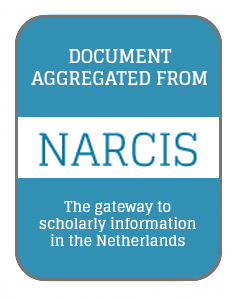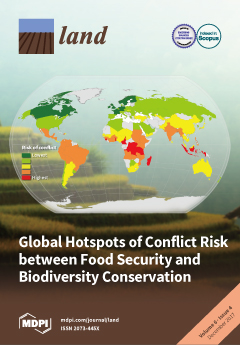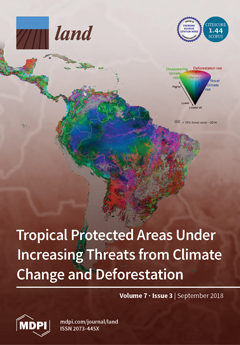Verrommeling in Nederland
In dit rapport wordt een begripsdefinitie en een operationele definitie gegeven van `verrommeling¿. In de 72 1 x 1 km grids, die ook in de Steekproef Landschap worden gebruikt, is een oordeel gegeven aan de mate van verrommeling. Dit is gerelateerd aan het vóórkomen van storende elementen, de uitstraling ervan en aan landschapskenmerken zoals de afwisseling in gebruiksfuncties. Driekwart van de variantie in verrommelingsscore blijkt uit deze bepalende factoren te kunnen worden verklaard.
Espaços de Resistência:
Land Cover Change in Northern Botswana: The Influence of Climate, Fire, and Elephants on Semi-Arid Savanna Woodlands
Complex couplings and feedback among climate, fire, and herbivory drive short- and long-term patterns of land cover change (LCC) in savanna ecosystems. However, understanding of spatial and temporal LCC patterns in these environments is limited, particularly for semi-arid regions transitional between arid and more mesic climates.
Criteria to Confirm Models that Simulate Deforestation and Carbon Disturbance
The Verified Carbon Standard (VCS) recommends the Figure of Merit (FOM) as a possible metric to confirm models that simulate deforestation baselines for Reducing Emissions from Deforestation and forest Degradation (REDD). The FOM ranges from 0% to 100%, where larger FOMs indicate more-accurate simulations. VCS requires that simulation models achieve a FOM greater than or equal to the percentage deforestation during the calibration period.
Landscape Disturbance Gradients: The Importance of the Type of Scene When Evaluating Landscape Preferences and Perceptions
Understanding of people’s landscape preferences is important for decision-making about land planning, particularly in the disturbance patterns that usually occur in rural-urban gradients. However, the use of different types of images concerning the same landscape may influence social preferences and thus perceptions of landscape management and planning decisions. We evaluated landscape preferences and perceptions in four landscapes of southern Chile.
Four Decades of Land-Cover Change on the Kenai Peninsula, Alaska: Detecting Disturbance-Influenced Vegetation Shifts Using Landsat Legacy Data
Across Alaska’s Kenai Peninsula, disturbance events have removed large areas of forest over the last half century. Simultaneously, succession and landscape evolution have facilitated forest regrowth and expansion. Detecting forest loss within known pulse disturbance events is often straightforward given that reduction in tree cover is a readily detectable and measurable land-cover change. Land-cover change is more difficult to quantify when disturbance events are unknown, remote, or environmental response is slow in relation to human observation.
Seasonal and Interannual Ground-Surface Displacement in Intact and Disturbed Tundra along the Dalton Highway on the North Slope, Alaska
Spatiotemporal variation in ground-surface displacement caused by ground freeze–thaw and thermokarst is critical information to understand changes in the permafrost ecosystem. Measurement of ground displacement, especially in the disturbed ground underlain by ice-rich permafrost, is important to estimate the rate of permafrost and carbon loss. We conducted high-precision global navigation satellite system (GNSS) positioning surveys to measure the surface displacements of tundra in northern Alaska, together with maximum thaw depth (TD) and surface moisture measurements from 2017 to 2019.
Forest Disturbance Types and Current Analogs for Historical Disturbance-Independent Forests
Forest classifications by disturbance permit designation of multiple types of both old growth forests and shorter-lived forests, which auto-replace under severe disturbance, and also identification of loss of the disturbance type and associated forest. Historically, fire and flooding disturbance regimes, or conversely, infrequent disturbance, produced unique forests such as disturbance-independent forests of American beech (Fagus grandifolia), eastern hemlock (Tsuga canadensis), and sugar maple (Acer saccharum) in the Eastern United States.
Climate Resilient Development Pathways
The 5th Assessment Report of the Intergovernmental Panel on Climate Change (IPCC) introduced the idea of “climate-resilient development pathways†(CRDPs) as key responses to the threat of climate change (Roy et al. 2018). CRDPs are not merely scenarios to envision possible futures but are processes of deliberation and implementation that address societal values, local priorities and their inevitable trade-offs (Roy et al. 2018).
Regulation of seed germination by diurnally alternating temperatures in disturbance-adapted banana crop wild relatives (Musa acuminata)
Seed conservation of banana crop wild relatives (Musa L. spp.) is limited because of lack of knowledge about their germination ecology. Musa acuminata Colla, the most important banana crop wild relative, is distributed in tropical and subtropical Asian and Pacific rainforests and colonizes disturbed sites. The role of temperature in stimulating/inhibiting germination to detect disturbance when canopy gaps are formed is not well known. We assessed seed germination thermal requirements of three subspecies of M.
Natural regeneration of severely degraded terrestrial arid ecosystems needs more than just removing the cause of degradation
The study focused on the extensive rangelands in Kuwait, covering more than 75% of the total land area. These rangelands face severe degradation due to factors such as overgrazing, anthropic misuse, and mismanagement. The research aimed to assess the impact of natural restoration, specifically through resting, on vegetation cover and species richness in a fenced 1 km² area. The findings indicated that while perennial species cover remained consistent between fenced and unfenced areas, there was a notable increase in annual species cover within the fenced sections.









